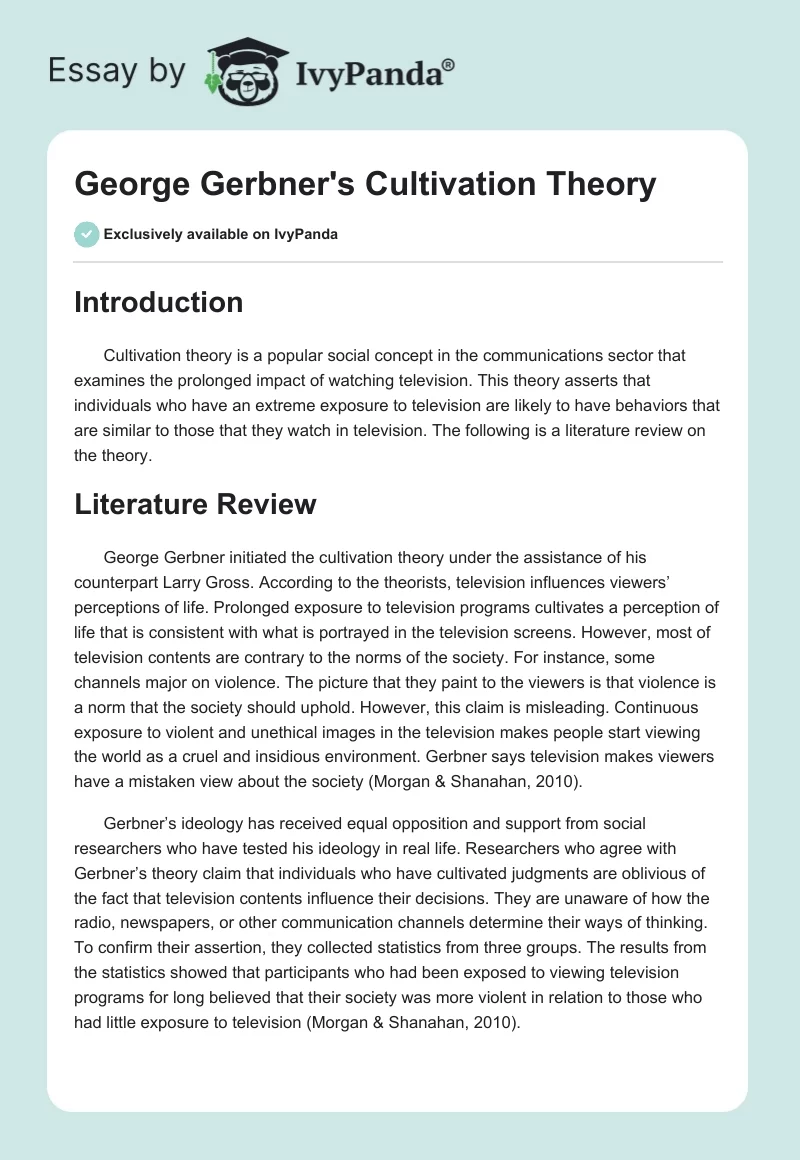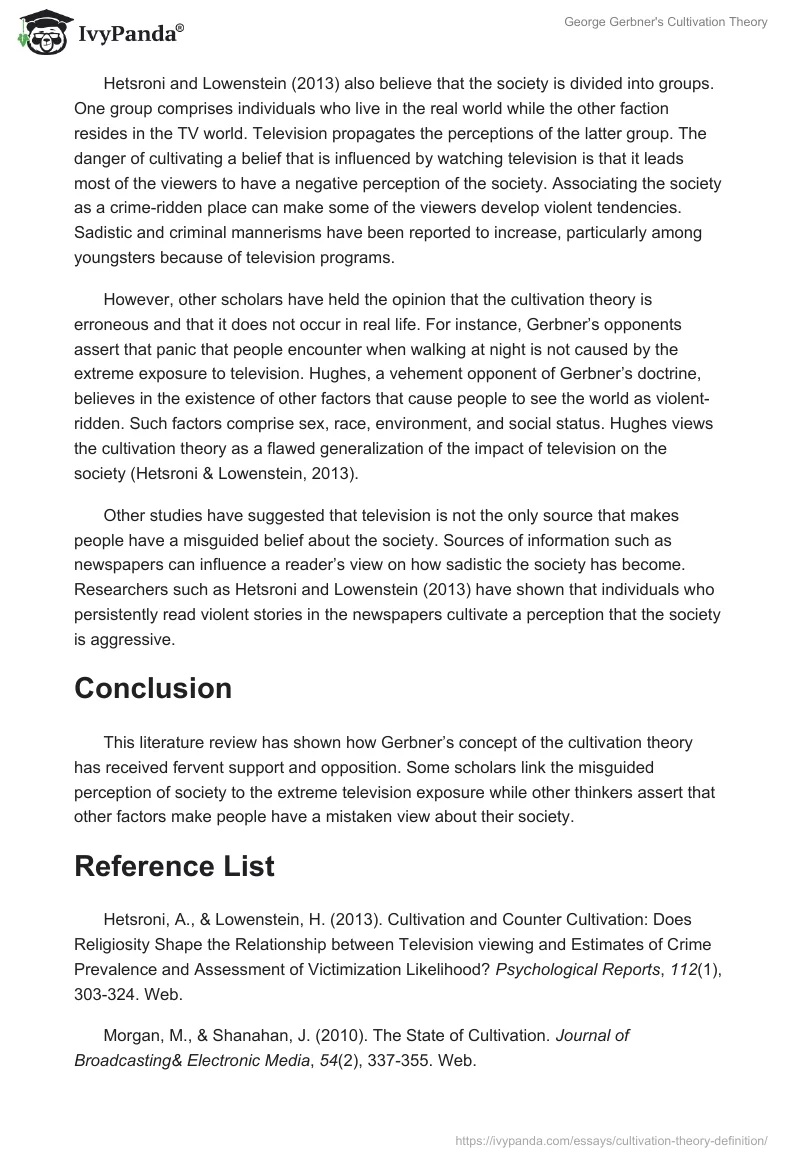Introduction
Cultivation theory is a popular social concept in the communications sector that examines the prolonged impact of watching television. This theory asserts that individuals who have an extreme exposure to television are likely to have behaviors that are similar to those that they watch in television. The following is a literature review on the theory.
Literature Review
George Gerbner initiated the cultivation theory under the assistance of his counterpart Larry Gross. According to the theorists, television influences viewers’ perceptions of life. Prolonged exposure to television programs cultivates a perception of life that is consistent with what is portrayed in the television screens. However, most of television contents are contrary to the norms of the society. For instance, some channels major on violence. The picture that they paint to the viewers is that violence is a norm that the society should uphold. However, this claim is misleading. Continuous exposure to violent and unethical images in the television makes people start viewing the world as a cruel and insidious environment. Gerbner says television makes viewers have a mistaken view about the society (Morgan & Shanahan, 2010).
Gerbner’s ideology has received equal opposition and support from social researchers who have tested his ideology in real life. Researchers who agree with Gerbner’s theory claim that individuals who have cultivated judgments are oblivious of the fact that television contents influence their decisions. They are unaware of how the radio, newspapers, or other communication channels determine their ways of thinking. To confirm their assertion, they collected statistics from three groups. The results from the statistics showed that participants who had been exposed to viewing television programs for long believed that their society was more violent in relation to those who had little exposure to television (Morgan & Shanahan, 2010).
Hetsroni and Lowenstein (2013) also believe that the society is divided into groups. One group comprises individuals who live in the real world while the other faction resides in the TV world. Television propagates the perceptions of the latter group. The danger of cultivating a belief that is influenced by watching television is that it leads most of the viewers to have a negative perception of the society. Associating the society as a crime-ridden place can make some of the viewers develop violent tendencies. Sadistic and criminal mannerisms have been reported to increase, particularly among youngsters because of television programs.
However, other scholars have held the opinion that the cultivation theory is erroneous and that it does not occur in real life. For instance, Gerbner’s opponents assert that panic that people encounter when walking at night is not caused by the extreme exposure to television. Hughes, a vehement opponent of Gerbner’s doctrine, believes in the existence of other factors that cause people to see the world as violent-ridden. Such factors comprise sex, race, environment, and social status. Hughes views the cultivation theory as a flawed generalization of the impact of television on the society (Hetsroni & Lowenstein, 2013).
Other studies have suggested that television is not the only source that makes people have a misguided belief about the society. Sources of information such as newspapers can influence a reader’s view on how sadistic the society has become. Researchers such as Hetsroni and Lowenstein (2013) have shown that individuals who persistently read violent stories in the newspapers cultivate a perception that the society is aggressive.
Conclusion
This literature review has shown how Gerbner’s concept of the cultivation theory has received fervent support and opposition. Some scholars link the misguided perception of society to the extreme television exposure while other thinkers assert that other factors make people have a mistaken view about their society.
Reference List
Hetsroni, A., & Lowenstein, H. (2013). Cultivation and Counter Cultivation: Does Religiosity Shape the Relationship between Television viewing and Estimates of Crime Prevalence and Assessment of Victimization Likelihood? Psychological Reports, 112(1), 303-324. Web.
Morgan, M., & Shanahan, J. (2010). The State of Cultivation. Journal of Broadcasting& Electronic Media, 54(2), 337-355. Web.


